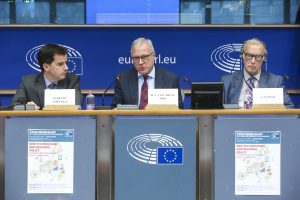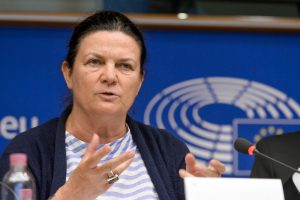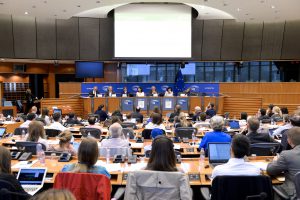Written by Silvia Polidori,
- The impact of new technologies on European local and regional growth is significant. For this reason, the European Union (EU) should provide policy strategies for the long term.
- It is essential to draw attention to the European dimension by giving more visibility to regional projects supported by the EU through its cohesion, research, and other policies.
- Procedures should be simplified, allowing local authorities and other final beneficiaries to manage the funds granted by the EU easily.
- Cohesion policy should include aspects of competitiveness among EU regions (regional benchmarks), allowing exemplary actors to pave the way for others lagging behind.
- A fast-track approach could be introduced, including conditional cross-policy support for advanced Research and Development (R&D) and testing facilities, programmes for higher education and professional training, and easier access to venture capital and other risk capital.
- Finally, synergies between various EU policies and programmes should be encouraged, to provide a homogeneous framework helping to leverage the results of local projects for a substantial global impact.
 These are some of the policy options for the legislator that emerged during the workshop organised by the Science and Technology Options Assessment (STOA) Panel of the European Parliament (EP) on 16 October 2017 in Brussels. The event aimed to discuss the impact and development of new technologies at European local level, and, in this context, to provide input to the debate on the next EU cohesion policy after 2020.
These are some of the policy options for the legislator that emerged during the workshop organised by the Science and Technology Options Assessment (STOA) Panel of the European Parliament (EP) on 16 October 2017 in Brussels. The event aimed to discuss the impact and development of new technologies at European local level, and, in this context, to provide input to the debate on the next EU cohesion policy after 2020.
As Ramón Luis Valcárcel Siso, (EPP, Spain), EP Vice-President responsible for STOA, explained during the opening of the event, STOA considered it important to set the stage for a broad panel of speakers to discuss the topic, benefiting from their different perspectives. On the one hand, the European Commission is currently drafting legislative proposals in the fields of cohesion policy, research, digital market and industry, while working on the multi-annual financial framework after 2020. On the other, the International Association of Science Parks and Areas of Innovation (IASP) is well placed to provide information on the impact of science parks on innovation at local level. Besides the input from these actors, and the contributions from the Committee of the Regions and the European Economic and Social Committee, it was crucial to involve ‘main clients’ of cohesion policy in the debate. By listening to the EU regions and Member States, the legislators heard their needs in terms of technology development and better legislative means for achieving effective implementation.
Several policies currently impact the technological development of EU regions. These will evolve further post-2020, as the speakers explained. In particular, regional policy will continue further along the path set out by smart specialisation, with the aim of building capabilities and capacities. There will be an effort to increase synergies with the research framework programme, representing, along with the European Structural and Investment Funds, the other major source of EU funding for research and innovation. All current instruments, such as the ‘seal of excellence’, should be improved in the future through aligning rules between different EU funds, including the application of state aid rules.
 With the support of both regional and research policies, the Digital Innovation Hubs contribute to the digital transformation of industry in all European regions. The aim is to ensure that every business in Europe, whatever its sector of activity, wherever located and whatever its size, can take full advantage of digital innovation and competences. The digital city challenge, as a special case of industry policy, is developing in this direction.
With the support of both regional and research policies, the Digital Innovation Hubs contribute to the digital transformation of industry in all European regions. The aim is to ensure that every business in Europe, whatever its sector of activity, wherever located and whatever its size, can take full advantage of digital innovation and competences. The digital city challenge, as a special case of industry policy, is developing in this direction.
Overall, the same synergy is needed for industry policy as a whole. The responsibility for making such a strategy fully operational is a shared one, relying on the efforts, cooperation and ownership of the EU institutions, Member States, regions and, most importantly, on the active role of the industry itself, as in the case of the European cluster collaboration platform.
Science parks and areas of innovation play an important role in regional development. They contribute to the economic development programmes of cities and regions, and are an essential part of innovation ecosystems. They have proven to create new knowledge-based and innovation-led businesses, and to increase inward investment of such businesses, as well as to accelerate the growth of Small and Medium-sized Enterprises (SMEs). The challenge is to exploit them further for the benefit of EU growth.

Each region in Europe has its own peculiarities and strengths, as stressed by the Smart Specialisation Strategy. This approach is crucial, as it makes it possible to raise and exploit the individual potential of regions with a global growth effect, as stressed by Constanze Krehl (S&D, Germany), member of the EP Committee on Regional Development (REGI). All existing European policies support local development in their specific area, but further effort is needed. One of the solutions could be the fast-track approach, as advocated by Lambert van Nistelrooij (EPP, The Netherlands), member of the EP Committee on Regional Development (REGI), who, together with Constanze Krehl, proposed and chaired the event. This approach would ensure speed of intervention, territorial dimension and stronger synergy with other policies.
STOA Panel member Georgi Pirinski (S&D, Bulgaria) highlighted a horizontal aspect to take into account in future cohesion policy in his closing remarks. Future regional policy should pay particular attention to regions lagging behind, so that investments in research and innovation are more uniform, aiming to set up a coherent European framework.
An in-depth report will draw upon the views expressed in the workshop, and will be published on the STOA website by the end of 2017. The report will also be circulated to the relevant actors responsible for the future cohesion policy at European and national levels.

















Be the first to write a comment.